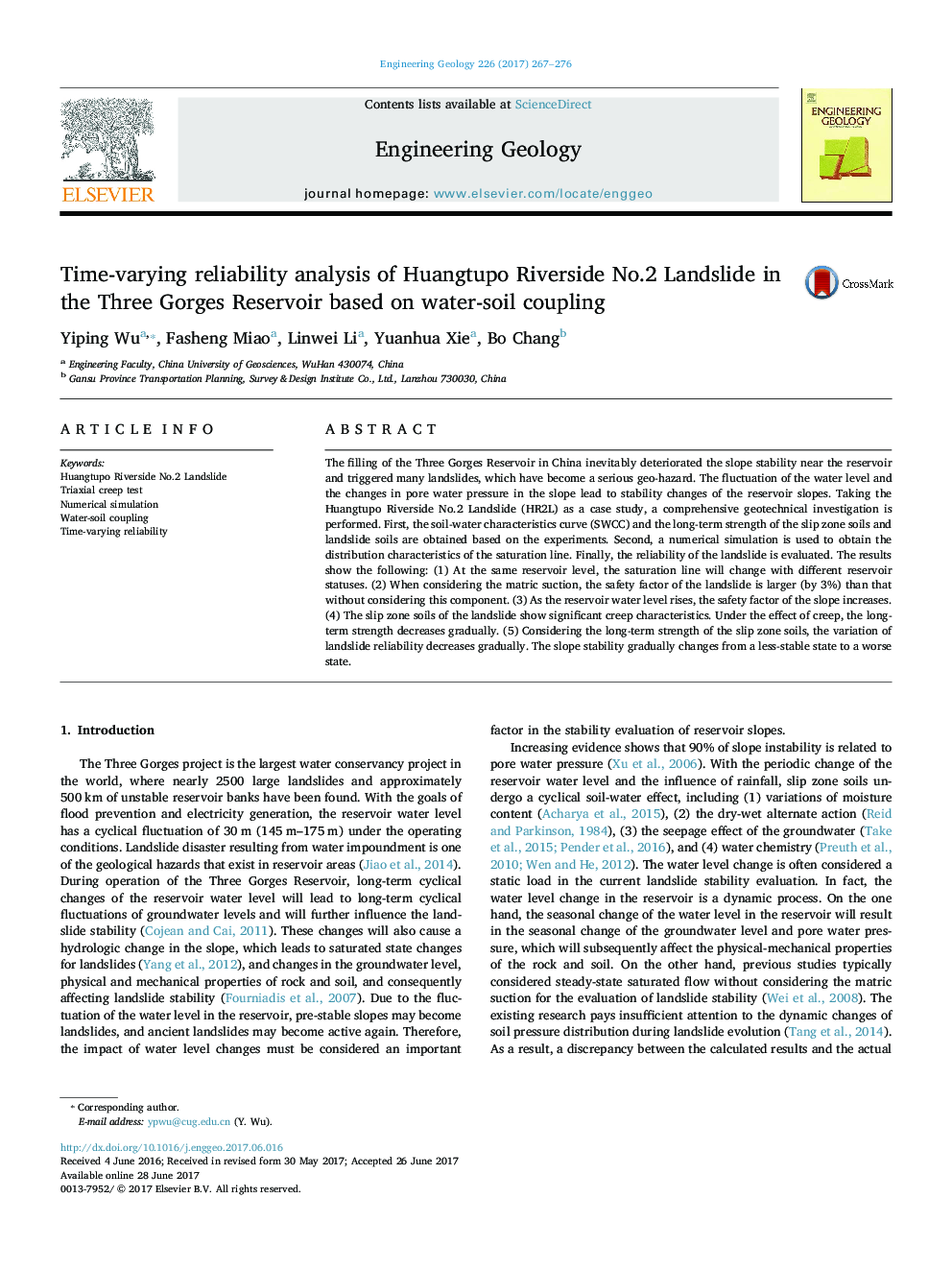| Article ID | Journal | Published Year | Pages | File Type |
|---|---|---|---|---|
| 5787490 | Engineering Geology | 2017 | 10 Pages |
â¢The factor of safety of the landslide considering suction is bigger than that without considering the suction by 3%.â¢Slip zone soils of the landslide show significant creep characteristics. Under the effect of creep, the long-term strength decreases gradually.â¢Considering long-term strength of the slip zone soils, the variation of landslide reliability decreased gradually.
The filling of the Three Gorges Reservoir in China inevitably deteriorated the slope stability near the reservoir and triggered many landslides, which have become a serious geo-hazard. The fluctuation of the water level and the changes in pore water pressure in the slope lead to stability changes of the reservoir slopes. Taking the Huangtupo Riverside No.2 Landslide (HR2L) as a case study, a comprehensive geotechnical investigation is performed. First, the soil-water characteristics curve (SWCC) and the long-term strength of the slip zone soils and landslide soils are obtained based on the experiments. Second, a numerical simulation is used to obtain the distribution characteristics of the saturation line. Finally, the reliability of the landslide is evaluated. The results show the following: (1) At the same reservoir level, the saturation line will change with different reservoir statuses. (2) When considering the matric suction, the safety factor of the landslide is larger (by 3%) than that without considering this component. (3) As the reservoir water level rises, the safety factor of the slope increases. (4) The slip zone soils of the landslide show significant creep characteristics. Under the effect of creep, the long-term strength decreases gradually. (5) Considering the long-term strength of the slip zone soils, the variation of landslide reliability decreases gradually. The slope stability gradually changes from a less-stable state to a worse state.
Graphical abstractDownload high-res image (392KB)Download full-size image
